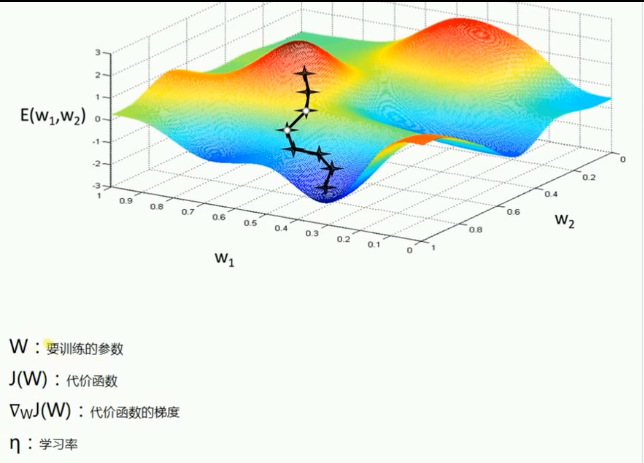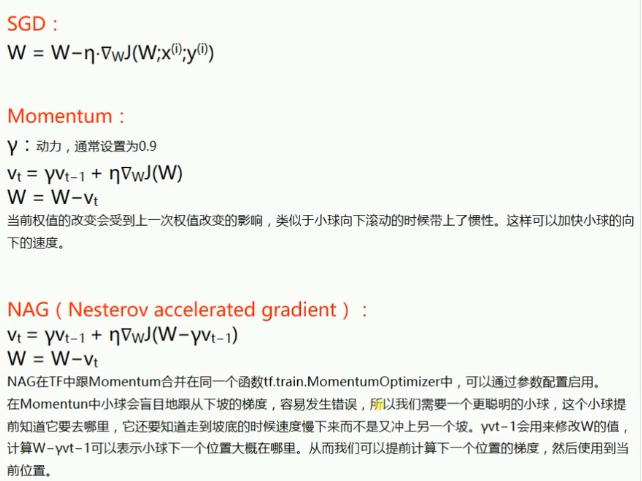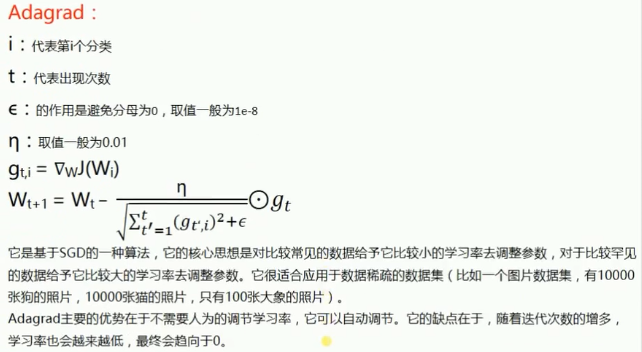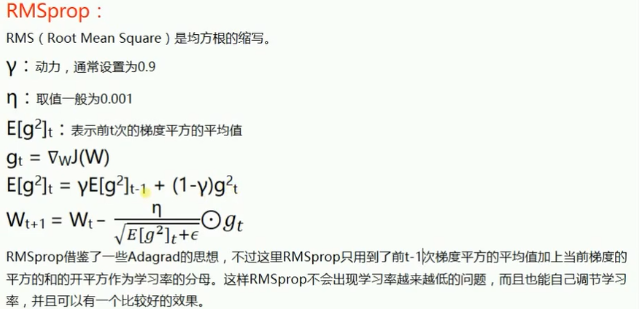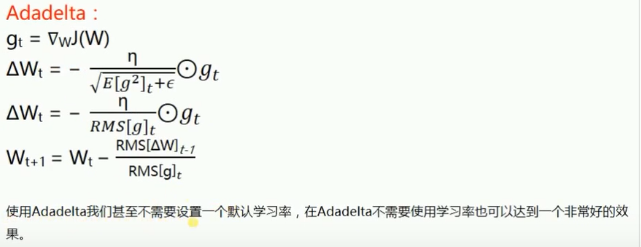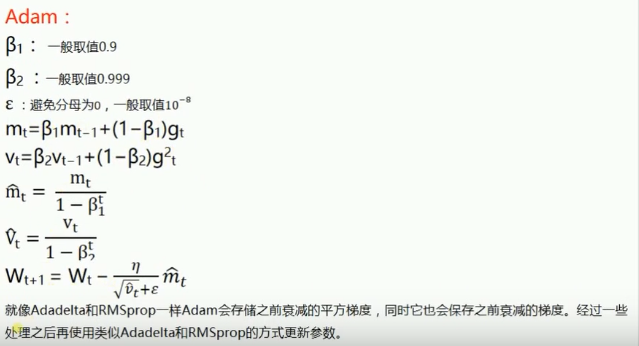TensorFlow——优化器选择
应用实例:
import tensorflow as tf from tensorflow.examples.tutorials.mnist import input_data #载入数据集 mnist = input_data.read_data_sets("E:/学习/目标检测/TensorFlow学习/MNIST_DATA",one_hot=True) #每个批次的大小 batch_size = 100 #计算一共有多少个批次 n_batch = mnist.train.num_examples // batch_size #定义两个placeholder x = tf.placeholder(tf.float32,[None,784]) y = tf.placeholder(tf.float32,[None,10]) #创建一个简单的神经网络 W = tf.Variable(tf.zeros([784,10])) b = tf.Variable(tf.zeros([10])) prediction = tf.nn.softmax(tf.matmul(x,W)+b) #二次代价函数 # loss = tf.reduce_mean(tf.square(y-prediction)) loss = tf.reduce_mean(tf.nn.softmax_cross_entropy_with_logits(labels=y,logits=prediction))#使用交叉熵来定义代价函数 #使用梯度下降法 # train_step = tf.train.GradientDescentOptimizer(0.2).minimize(loss) # train_step = tf.train.AdadeltaOptimizer().minimize(loss) train_step = tf.train.AdagradOptimizer(0.01).minimize(loss) #初始化变量 init = tf.global_variables_initializer() #结果存放在一个布尔型列表中 correct_prediction = tf.equal(tf.argmax(y,1),tf.argmax(prediction,1))#argmax返回一维张量中最大的值所在的位置 #求准确率 accuracy = tf.reduce_mean(tf.cast(correct_prediction,tf.float32)) with tf.Session() as sess: sess.run(init) for epoch in range(21): for batch in range(n_batch): batch_xs,batch_ys = mnist.train.next_batch(batch_size) sess.run(train_step,feed_dict={x:batch_xs,y:batch_ys}) acc = sess.run(accuracy,feed_dict={x:mnist.test.images,y:mnist.test.labels}) print("Iter " + str(epoch) + ",Testing Accuracy " + str(acc))
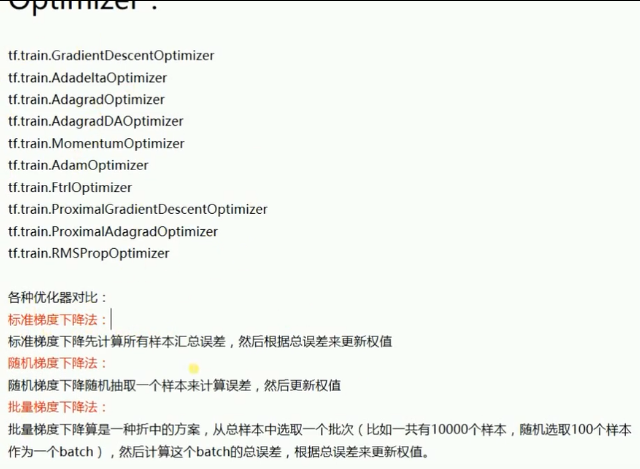
TensorFlow中有多个优化器可以选择,最简单的就是SGD(随机梯度下降法)
